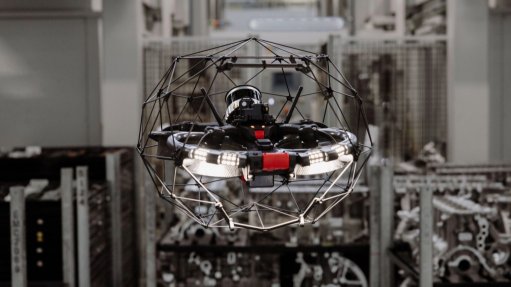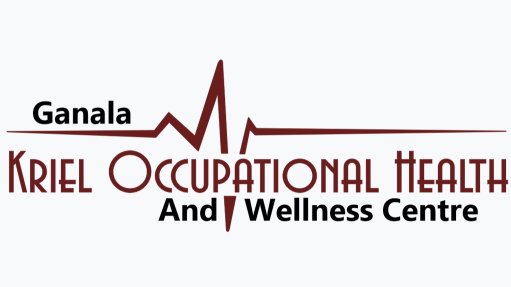Delinking from the minerals sector
Minerals and energy resources will continue to play an important role in South Africa’s economy. It is what South Africa does that will determine its future.
While we have substantial minerals of strategic global value, such as platinum- group minerals, titanium, chrome and manganese, besides others, the minerals and energy complex (MEC) has multiplier effects that have linkages to heavy industry, construction, engineering services and the financial sector. Private fixed capital formation in the last 20 years has been the highest in the mining sector.
Over time, mining will decline and the most optimal orebodies will be exhausted. If we do not build something to displace our minerals, there is a danger we will not have a resilient economy.
The spend in the MEC runs into trillions – if you take a cluster view rather than just a raw materials view. You just have to look at the projected pipeline of investment projects in mining and the energy sector – these are interlinked. These should also include new areas like oil and gas. Much of this investment potential is delayed by regulatory issues and, in the medium term, by the State’s ability to continue to provide guarantees for new infrastructure projects, given the cash flow bleeding that is taking place at Eskom, South African Airways and other State-owned enterprises.
The State will get to exercise considerable influence and control over the MEC through the ownership of the resources base and its procurement spend on new infrastructure to support the development of the minerals sector and meet present and future energy demand.
However, nonperforming State entities can eat at the surpluses and, at the same time, increase the output gap if the delivery of this infrastructure is inefficient. This is evident in the power sector with the delays in the construction of the Medupi and Kusile coal-fired power stations. Cost overruns mean that Eskom’s debt burden is growing and its cash flow is being squeezed. This means it has to raise capital at higher costs without there being a guarantee that the full cost of inefficiencies can be passed through to consumers. Thus, Eskom’s debt burden keeps increasing.
In the meantime, the energy deficit is driving new investments in power plants and is also a source of new technology adoption, innovation and entrepreneurship. Fixed capital formation in the last four years has largely been driven by the Renewables Energy Independent Power Producer Procurement Programme (REIPPPP).
This has been shown, for instance, in the level of capital investment in this sector of about R163-million, largely by the private sector. There is more to come, as the procurement of independent power producers (IPPs) is being broadened beyond the renewables industry. This expansion will also be seen in the distributed generation sector as commerce, industry and rich households may want to move away from the grid if the move will provide better energy security and management of electricity price uncertainty. Competition in the renewables space has been fierce, with bidding prices showing high levels of price differentials between the first and fourth rounds of IPP bids. Fixed investment growth in the energy sector has been the highest, with capital outlays of around 20% a year since 1994.
The renewables sector demonstrates that new energy carriers are not only sources for new investment but also new forms of entrepreneurship, technology innovation and ancillary services, and can deliver significant downstream benefits through social and economic development (SED) provisions that the REIPPP has built in the bidding process. State procurement that is well designed, corruption free and tied to SED goals need not only meet price requirements but also support manufacturing and, with time, higher levels of industrialisation in the manufacturing of components for the renewables sector.
The procurement model for the REIPPPP – for all its flaws – seeks to grapple with the balance between price and broader socioeconomic development goals. Importantly, many of the renewables projects are being implemented in economically depressed areas of the country. They are also geographically dispersed because of the nature of the wind and solar resource base. They not only diversify farmers’ or landowners’ incomes but also provide opportunities for economic upliftment across many communities. However, similar to what is stipulated for mining social and labour plans, we need to work hard at turning community revenue streams from renewables projects into robust development outcomes – they will not happen by osmosis.
Strategically, South Africa can also play an important service and component export role for the rest of Africa, where there is a dearth of energy for a significant untapped energy demand for 500-million or more consumers in Southern Africa. The once scoffed-at sector has significantly more potential, and needs to be harnessed. Africa is ripe for more renewables penetration as large-scale bulk energy infrastructure is more capital intense and likely to be more expensive and takes longer to build.
Diversifying the manufacturing base of South Africa needs more coordination and a sharper policy focus. Strategically, it can play an important part of the global value chain. The same is not going to be true about nuclear. There are several reasons: it most likely will lead to a fiscal burden (if not cliff), as the more complex a technology is, the more difficult it is to implement and localise, and the significant capital commitments and guarantees required by the State create an opportunity cost, more so because most of these projects are high risk and always have cost overruns. We can solve our energy supply problem with more modular technology solutions than through nuclear. We should intensify efforts to implement renewables, gas and demand-side management options instead of focusing on nuclear.
Finally, the MEC must also be viewed through a wider lens – South Africa’s geoeconomy need not be confined to the borders of the country. We should look more regionally to expand the services we can offer from our MEC to parts of the region where these services are lacking or least developed. We can operate these in a competitive way.
Article Enquiry
Email Article
Save Article
Feedback
To advertise email advertising@creamermedia.co.za or click here
Comments
Announcements
What's On
Subscribe to improve your user experience...
Option 1 (equivalent of R125 a month):
Receive a weekly copy of Creamer Media's Engineering News & Mining Weekly magazine
(print copy for those in South Africa and e-magazine for those outside of South Africa)
Receive daily email newsletters
Access to full search results
Access archive of magazine back copies
Access to Projects in Progress
Access to ONE Research Report of your choice in PDF format
Option 2 (equivalent of R375 a month):
All benefits from Option 1
PLUS
Access to Creamer Media's Research Channel Africa for ALL Research Reports, in PDF format, on various industrial and mining sectors
including Electricity; Water; Energy Transition; Hydrogen; Roads, Rail and Ports; Coal; Gold; Platinum; Battery Metals; etc.
Already a subscriber?
Forgotten your password?
Receive weekly copy of Creamer Media's Engineering News & Mining Weekly magazine (print copy for those in South Africa and e-magazine for those outside of South Africa)
➕
Recieve daily email newsletters
➕
Access to full search results
➕
Access archive of magazine back copies
➕
Access to Projects in Progress
➕
Access to ONE Research Report of your choice in PDF format
RESEARCH CHANNEL AFRICA
R4500 (equivalent of R375 a month)
SUBSCRIBEAll benefits from Option 1
➕
Access to Creamer Media's Research Channel Africa for ALL Research Reports on various industrial and mining sectors, in PDF format, including on:
Electricity
➕
Water
➕
Energy Transition
➕
Hydrogen
➕
Roads, Rail and Ports
➕
Coal
➕
Gold
➕
Platinum
➕
Battery Metals
➕
etc.
Receive all benefits from Option 1 or Option 2 delivered to numerous people at your company
➕
Multiple User names and Passwords for simultaneous log-ins
➕
Intranet integration access to all in your organisation


















